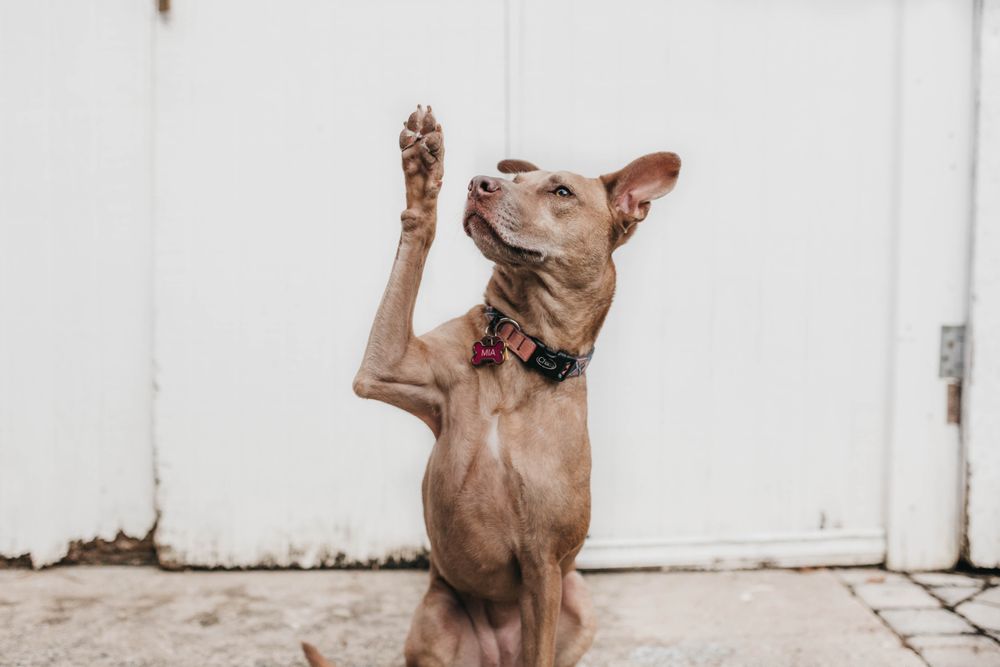Being able to call your dog away from a thing or situation that is dangerous, is a crucial skill and could potentially save your dog’s life. If you’re able to successfully call your dog and have them come back to you, you could stop them from running into oncoming traffic, approaching a dangerous animal, or prevent them from encountering numerous other life-threatening situations. To help you teach your dog to come, and have a little fun in the process, this article explains:
- How to teach your dog to come when called
- How to use the Hide and Seek game to improve your dog’s recall
- What other pet parents are asking about teaching their dog to come
How to train a dog to come when called
When teaching “Come”, it's really important to set up your dog’s training environment to help them be successful. This means practicing:
- In a quiet area.
- With no distractions.
- With your highest value rewards such as lamb lung
- Using a long leash or staying in a fenced in area until your dog reliably comes when called.
Once you’ve set up your dog’s environment, you can start practicing the three phases of come:
- Phase 1 - Introducing the verbal cue “Come”. Grab a handful of treats, stand in front of your dog, say “Come!” and drop a treat on the floor by your feet. To practice, schedule at home training sessions 3-5x per week, and repeat the exercise 8-10 times for 2 weeks.
- Phase 2 - “Come” at a distance. Grab a handful of treats, stand in front of your dog, say “Come!” and drop a treat on the floor by your feet. Once your dog has eaten the treat, toss another treat 5-10 feet away. As soon as your dog eats the treat, say “Come!” and then give your dog another treat when they come to you. When your dog is eating the treat, toss another treat 5-10 feet away. To practice, schedule at home training sessions 3-5x per week and gradually increase the distance over time.
- Phase 3 - Add distractions. Do everything mentioned in Phase 2, but add distractions to the mix. This could be a new person or going to an unfamiliar room. Continue to practice 3-5x per week and gradually increase the level of distractions over time.

How to use Hide and Seek to improve your dog’s recall
Hide and Seek is a great game to practice your dog’s recall! Here’s how to play:
- Step 1: Invite a friend over and ask them to hold your dog on one side of the room. Use a leash if your dog isn’t totally comfortable being handled.
- Step 2: You grab a treat or your dog’s favorite toy, show it to your dog, and then run and hide.
- Step 3: Once you’ve found your hiding spot, yell “Come!” and have your friend release your dog.
- Step 4: When your dog finds you, give them their treat or toy and shower them with praise. You want your dog to think, “When I respond to ‘Come’, good things happen!”
Pro tip: To make sure your dog doesn’t get frustrated, choose easy hiding spots at first. Once your dog gets the hang of the game, and they have more reliable recall, you can make things more challenging by hiding in less obvious places!
Frequently asked questions about teaching your dog to come
How do you train a stubborn dog to come?
If your dog is stubborn or doesn’t reliably come when called, you shouldn’t allow your dog to be off leash. Prioritize practicing your recall cue in a low-distraction environment such as your backyard or living room.
What is a good recall word for dogs?
“Come” is a popular recall word because it’s one syllable and easy to remember. That being said, you can choose whatever word you want as long as you’re consistent with your dog.




